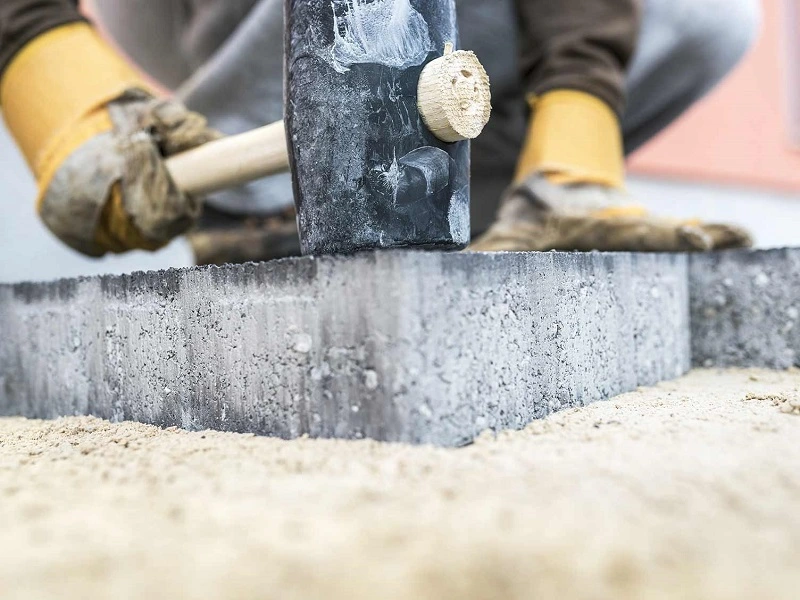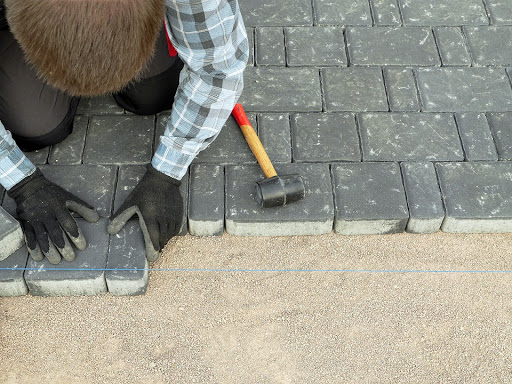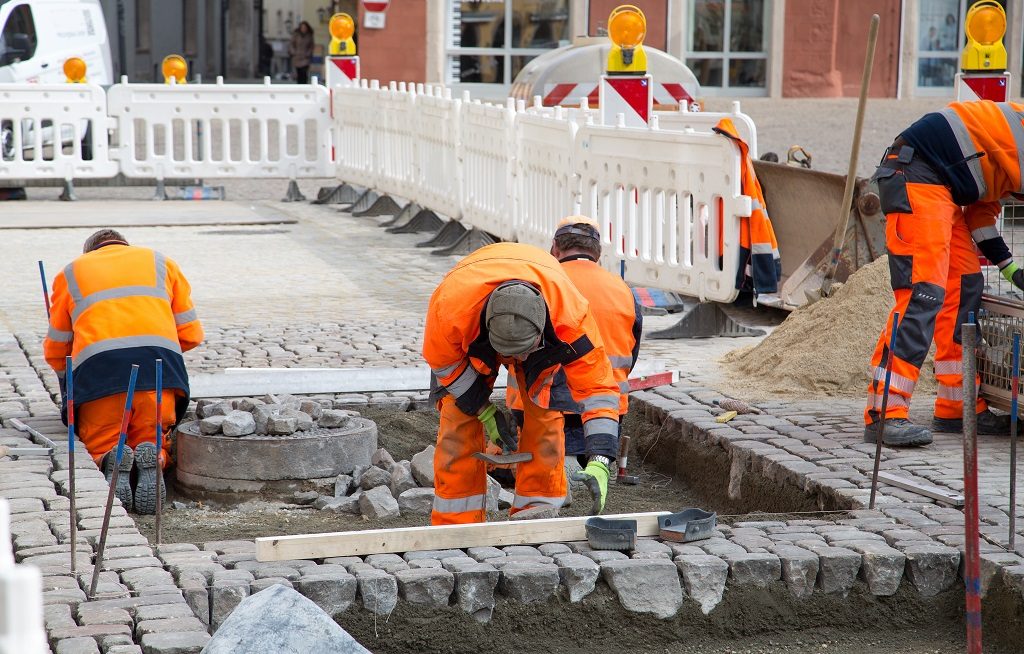Stone Pavers Around Your House. How to Lay Paving Stones?
If you are planning to make pathways or a patio around your house, you might wonder what materia to choose. Making the right decision is not easy. The main goal for is to enhance the looks of the area surrounding your house and fit the house itself. Many homeowners decide to lay paving stones. Paved pathways are quite cheap, which is a big advantage of such a solution. There are many types of paving stones - they differ by quality and properties. Check the most important information you should know before finishing the property.

Paving stones - choosing the right material
Before you start working on your paths and patio, you should choose the right material. You can get many types of paving slabs. Choosing the right one you should pay attention to the material, it color and general effect you expect from the pavement. The price of the material is a crucial aspect as well. Keep in mind that the prices differ, depending not only on the material but also on the size and thickness of stones. Manufacturers usually set the price by the weight, therefore make sure you know how sufficient the material is.

How much do paving stones cost? It depends on their type!
- Natural stone (granite) pavers - such paving stones are made of natural material. For this reason, it’s the more expensive option.
- Industrial (concrete) pavers - paving stones produced from formed concrete. Such slabs are mass-produced, hence the lower price.
Note that the price depends on the thickness and size of the material. Manufacturers typically set their prices per weight unit (ton), so keep the efficiency of paving stones in mind.
If you want to hire a professional to lay the pavement for you, keep in mind that the price for the service involves various aspects. It is important, for instance, whether your stones have one colour or if you want to arrange them in a pattern. Preparing the terrain is also included in price.

Laying paving stones - quality and price
Having decided on paving stones for your garden, you might wonder which slab is the best. The main points of interest are the quality of the material, aesthetics, price and practicality. All those aspects should be taken into consideration before purchasing the material.
Concrete paving slabs
Industrial paving stones are usually made of concrete. The material is concentrated and condensed, with addition of as little water as possible. Thanks to the addition of colourful grit and pigmentation the stones have various colours. Colourization might involve the whole paving stone or just its surface. The main advantages of concrete paving stones are:
- Durability - concrete stone rarely gets damaged, and manufacturers implement various methods of hardening the material.
- Frost resistance - industrial paving stones can be characterised by low water absorption. Because of this feature water does not get inside the material and therefore frost cannot damage it.
- A lot of designs - manufacturers offer paving stones in various shapes and colours. Such a wide selection makes it easier to fit the stones to the design of your house. In this regard, concrete paving slabs are better than natural stone pavers.
- Wide range of prices - it’s the biggest advantage of material of this type. You will surely find the right product for yourself even if your budget is very limited. Cost of installing a concrete pavement by a professional is also much lower than it is with a granite stone.
The biggest disadvantage of concrete stone is its lower resistance in comparison with natural stone.

Natural paving stone
Natural stone is a good alternative for concrete paving stones. The most popular choice in this category is granite. The price of this material is much higher that concrete. Nevertheless, granite is valued for its features, such as:
- Resistance to damage - granite is resistant to crumbling, abrasion and discolouration. Once laid, this type of paving stone is going to last for a very long time.
- Resistance to fire and frost - low temperatures are not dangerous for granite paving stones. They also cannot be destroyed by heat or fire.
- Natural material - granite extraction is ecological and does not involve use of any chemicals.
- Stylish look - natural stone is very elegant. It is a perfect solution for homeowners who want to combine the aesthetics and durability of granite. This material will suit most houses with classical design.
The biggest disadvantage of granite paving stones is their uneven surface, which is difficult to clear of snow. Granite does not always match the style of a building. Concrete stone is much more universal in this matter.

How to lay paving stones? A step by step guide
A decision to pave the paths yourself is a great way to significantly reduce the costs. It is not as difficult as it seems. All you need is good preparation.
- If you decided to lay paving stones on your own, you might wonder what kind of material you should choose. While the price is important, it should not be the decisive factor. Thickness of the paving stone should be suited to the intended use of the pavement. You should also predict resistance of the material to mechanical damage. For instance, 4 centimetres thick paving stones are good for garden paths, whereas for a patio you should use material that is twice as thick. The paving slabs should also visually harmonise with the building.
- Before you start laying the paving stones, dig a depth across the area in which you are planning to lay the stones. The depth depends on the intended use of the pavement. For garden paths it is usually 15-20 cm. For a heavier use, the depth should be at least half a metre. Shape the bottom so that water can be carried away.
- Before laying the paving stones, you should start from the edges. For small paths you may use pavement kerbs or palisade. In spots at which vehicles are going to move, you should use large road kerbs. Place the elements on a layer of concrete. After it dries up, fill any spaces with sand. Make sure to be very precise, so that the kerbs are nice and even.
- Lay and compact aggregate, and then create a base using concrete and sand. Then you can start laying the paving stones. You can lay them alternately or in patterns. Make sure not to step on the base. You can, however, step on the laid slabs. Lay the stones as tight as possible and make sure to mix the elements, choosing them from different pallets. The paved stones need to be pressed. You can use a surface vibrator for this purpose.
You can lay paving stones by yourself, or hire a professional to do it for you. One of the most important issues is choosing the right material. The price might be the decisive aspect, however you should also pay attention to the appearance and durability of the paving stones.
If you finish laying paving stones around your house, you might finish other elements. Check what patio and stairs tiles are available on the market and how to lay them. Get inspired and create your own pallet furniture. Create a unique space in your garden.

📍 What is pavement made of?
Pavement stones are made either of concrete or of natural stones. Concrete is the most commonly used material, however natural granite paving stones are the most durable of all.
📍 How to clean paving stones?
For light dirt you can use water with soap, brushing the area. If your paving stones are very dirty, pour a mix of water and vinegar onto them. The quickest way to clean your patio is using a pressure washer.
📍 How to cut paving stones?
The quickest way to cut a paver stone is using a circular saw or angle grinder. Brick splitter is easier to use. If you don’t have such equipment, you can just use a hammer and chisel.
Featured articles



